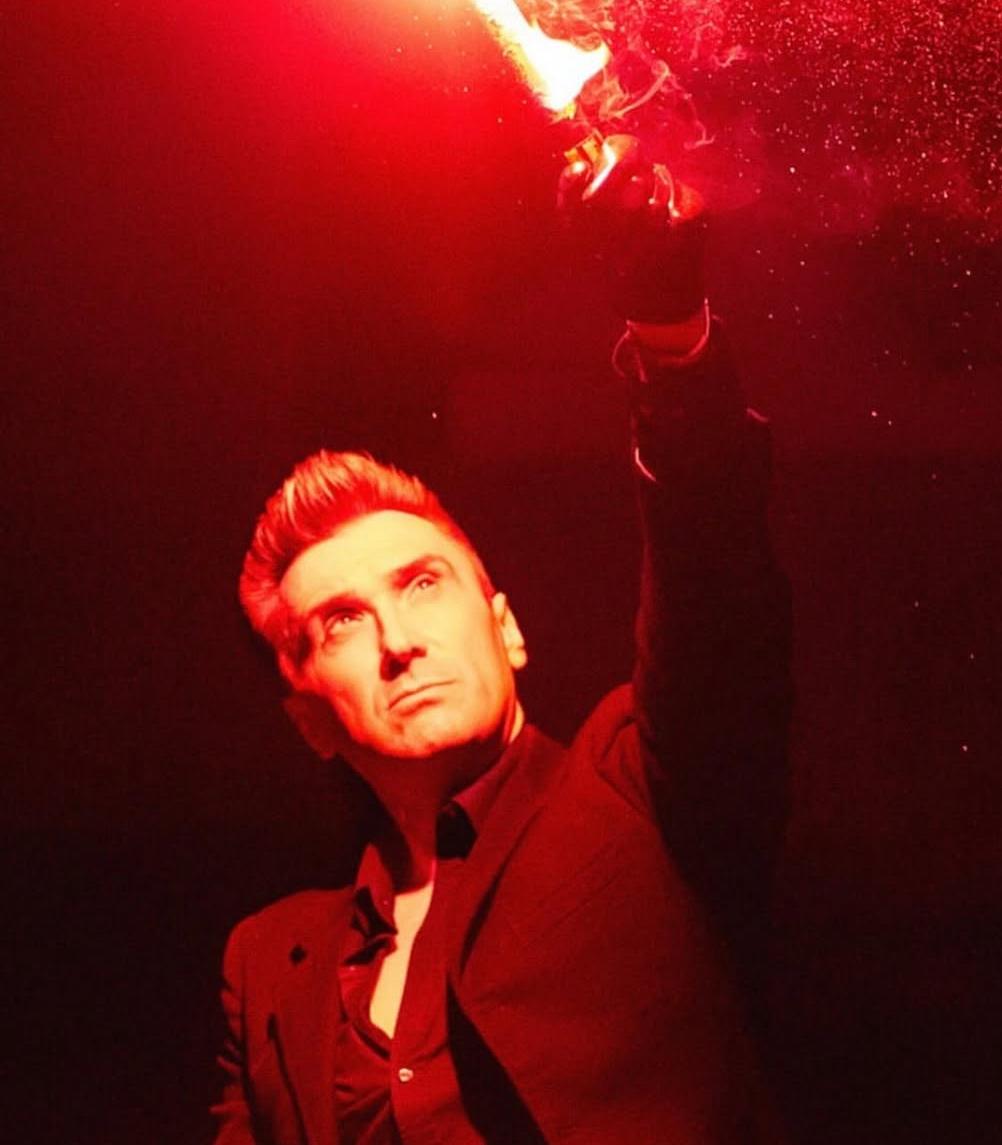Stefano Cagol: Art, a Breath between the Present and the Abyss
Navigating climate crisis and deep introspection, his art stands as thresholds, urging us to confront the present and forge the future. Delve deeper into his unique vision.
FEATURED ARTIST OF THE WEEK
Charlotte Madeleine CASTELLI
7/2/20254 min read


"We are the flood. We are the epidemic. We are global warming."
This is no mere proclamation. It is a profound awakening—a call to face a reality that is no longer distant or ethereal, but palpable, here and now. Stefano Cagol’s work transcends the boundaries of the art object to become an act—performative, conceptual, deeply interwoven with the very fabric of our time's crucial challenges. His art is a living frontier, an urgent device of perception and reflection that flickers and collapses like a flame caught in a restless wind. In an era precariously suspended between the Anthropocene and the Biocene, caught between hyperconnectivity and ecological suffocation, Cagol positions himself as a bridge. He stands at the intersection where the invisible becomes manifest, where matter and thought merge, where the present confronts its own abyss.


My first encounter with Cagol was through the echo of his imagery, but soon it extended into the physical territories he inhabits and awakens: snow-covered landscapes, geopolitical borders that pulse, ancient castles, and diaphanous surfaces that seem to hold more questions than answers. His work summons sensory experiences that are almost tactile: the sharp crack of ice fracturing, the piercing glow of fluorescent smoke creeping forward like an omen. These are not mere aesthetics but elemental manifestations of phenomena we can no longer afford to ignore: the warming atmosphere, the earth trembling beneath our feet, history itself dissolving into a fluid present. Yet, rather than succumbing to despair or spectacle, Cagol’s work is a vigil. It is a sustained watchfulness, a ritualistic act of bearing witness with eyes wide open and heart engaged.
There is no distance in his performances between gesture and consciousness: the iconic moment when he transported a block of Alpine ice to the Venetian lagoon during the 2013 Biennale di Venezia; this was not a provocation staged for shock or novelty; it was a solemn ritual, the block’s slow melting beneath the sun became a metaphor for human negligence, a physical embodiment of fragility made visible. It was a slow, poetic act of testimony, as if art retained the ancient power of prophecy, a language that could still warn and awaken us to impending shifts.
What profoundly moves me in Cagol’s practice is the inseparable weaving of action, thought, and landscape. His work does not merely occupy space—it operates within time itself, extending far beyond human scale to the geological, climatic, and collective. Yet, paradoxically, everything he creates remains deeply intimate. Within the gestures that traverse the Alps or the borders of Europe lies an ethic of radical care—an attention to life in all its vulnerable forms. His artworks, despite their often cold and elemental surfaces, speak directly to our skin, carrying the warmth of wounds and the transparency of hard truths we tend to avoid.
His appointment as artistic director of Castel Belasi was, for me, an organic continuation of this trajectory, 'cause the castle—perched between Gothic stonework and Alpine mist, caught between centuries and clouds—awaited someone capable of listening deeply. Stefano answered this call. Under his guidance, this magic place has transformed into a laboratory of transformation itself, an acoustic chamber where the voices of the earth, history, and contemporary art resonate in powerful harmony.
The curatorial trilogy he conceived—Like Water, Like Islands, Like Ice—unfolds as a poetic narrative shaped by materiality and metaphor. This three-act symphony explores the fluidity and symbolic potency of water in its mutable states. The culminating chapter, As Ice, currently unfolding within the castle’s venerable walls, invites visitors to embark on a journey not of mere observation, but of immersion. It demands to be experienced slowly, allowing the work to settle and permeate the soul. The ensemble of artists he has gathered—from AES+F to Laura Pugno, Gregor Hildebrandt, and Ivínguak’ Stork Høegh—forms a polyphonic chorus that articulates the urgency of our times with a grace that honors the transformative power of beauty—a power we so desperately need now.
Yet beyond the works themselves, it is Stefano’s gaze that truly defines his approach. This gaze does not seek to dominate or impose, but to understand and hold. It pauses to listen, to observe deeply, and only then acts. For him, curatorship is never a neutral act nor an ornamental gesture; it is a profound ethical commitment, an act of care and love.
This vision resonates profoundly with the mission of Future: like Cagol, we believe that art must be a site not of escapism but of radical presence—a fertile ground where memory, innovation, fragility, and possibility intertwine. The themes Stefano confronts—climate crisis, human agency, transformation—are not peripheral; they are the very grammar of our epoch, they demand new languages, and he offers us one that is luminous, courageous, and uncompromising.
In Stefano Cagol’s world, Art is responsibility: it's a terrain where fragility can be transmuted into strength, and where the future remains an open field—a hypothesis we can still shape, together.
Perhaps most importantly, Cagol reminds us that the boundaries we fear—ecological, political, existential—need not be barriers. They can be openings. They are the precise places where clarity is born, where change begins.
His works do not provide answers. They are thresholds.
And... I choose to believe that through these thresholds, something like hope still flows, still passes.
© Charlotte Madeleine Castelli | All rights reserved
